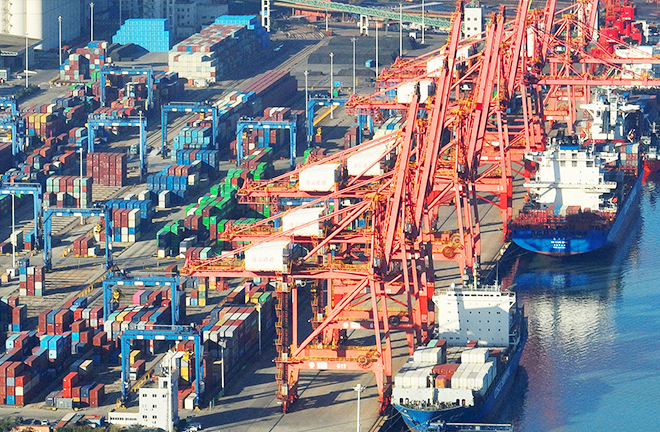Chinese economy is not facing a balance sheet recession

The Port of Lianyungang in Jiangsu Province, Nov. 7 Photo: CFP
The statements made by Dr. Richard C. Koo, chief economist at the Nomura Research Institute in Japan, have sparked heated discussions among various parties. In late June, Koo publicly expressed concerns that if the real estate bubble were to burst, China could potentially face the threat of a balance sheet recession. In response to this risk, Koo’s “prescription” is not to waste time on monetary policy and structural reform, but to allow fiscal policy to play a vital role.
What exactly is a balance sheet recession? Koo explains this kind of recession in his book The Holy Grail of Macroeconomics: Lessons from Japan’s Great Recession. This kind of recession usually occurs after the bursting of serious asset price bubbles. During a period of asset price inflation, enterprises in a country borrow money to acquire various assets. However, when the asset price bubble bursts, the value of these assets significantly declines, while the liabilities on the balance sheets of these companies remain unchanged, forcing enterprises into insolvency. Despite their functional production and operations, their primary focus shifts from “maximizing profits” to “minimizing liabilities,” using subsequent operating income to repay past debts. If a large number of companies adopt this approach, it can result in a fallacy of composition. Without additional demand generated through expansionary fiscal policies implemented by the government, the economy may plunge into a prolonged recession. This type of recession is referred to as a “typical” balance sheet recession.
Why is monetary policy ineffective at addressing a balance sheet recession? This is because if the objective of a company shifts from maximizing profits to minimizing liabilities, even if the borrowing rates are reduced to zero before the company can repay its past debts, the company will not have the motivation to contract new loans, which means that the transmission mechanism of monetary policy is basically ineffective. Koo notes that this phenomenon is essentially the micro foundation of what Keynes referred to as a “liquidity trap.”
How to get out of a balance sheet recession? Koo believes that fiscal policy must play the only important role. When all enterprises are committed to debt repayment, leading to a negative total demand gap, the government must take action to fill this gap to avoid a significant decline in economic growth.
China’s GDP increased by 5.5% year-on-year in the first half of 2023, indicating a rebound and a positive trajectory for the economy, albeit with pressure still present. Even though the foundation for China’s sustained economic recovery and development is still not solid, China has not confronted a balance sheet recession.
There are several reasons why China has not faced a balance sheet recession. Firstly, China has not experienced a significant bursting of asset price bubbles. Secondly, the corporate sector in China has not undergone a prolonged deleveraging process. Thirdly, the Chinese economy has not fallen into a so-called “liquidity trap,” and loose monetary policy continues to be highly effective. Due to the long-term implementation of prudent monetary policy by the central bank in the past, there is still ample room for the implementation of loose monetary policy in China.
In summary, using the so-called “balance sheet recession” theory to analyze China’s current development situation and disparaging the Chinese economy is neither objective nor comprehensive. Therefore, the efficacy of the “prescription” thus formulated is worth being vigilant about.
Currently, China’s economic growth faces two challenges. Firstly, as the aging of the population intensifies and the traditional model of relying on investment and exports to drive economic growth becomes unsustainable, the potential growth rate of China’s economy continues to decline. Secondly, the increase in domestic and foreign uncertain factors has resulted in a significant decrease in China’s economic growth rate compared to its potential, leading to a sustained negative output gap.
To address these challenges, China should focus on boosting the economy and increasing potential economic growth through a new round of reform and opening-up. Furthermore, the Chinese government should moderately increase the expansion of fiscal and monetary policies in order to eliminate the negative output gap as soon as possible. It is essential to strengthen the coordination between fiscal policy and monetary policy, and to allow fiscal policy to play a more active and important role.
Zhang Ming is deputy director of the Institute of Finance and Banking at the Chinese Academy of Social Sciences.
Edited by ZHAO YUAN
